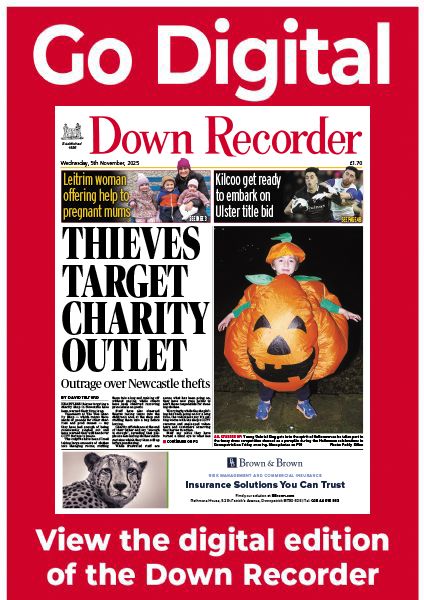Ambulance call times concerns
Ambulance call times concerns
31 July 2019
MAJOR concern has been expressed about the time it is taking the Ambulance Service to respond to emergency calls in the Newry, Mourne and Down Council area.
Statistics obtained by the Down Community Health Committee — which have this week been made public – shockingly reveal that less than one third of life-threatening calls were responded to within the recommended eight minute guideline period.
Campaigners say while the dedication and professionalism of Northern Ireland Ambulance Service staff and management are widely appreciated across the entire community, the fact remains that the service is “grossly under resourced and has been for many years”.
The Health Committee has also welcomed proposed additional investment in ambulance service resources, both in terms of personnel and capital resources.
However, campaigners say that the community is “deeply concerned” about the recent revelations concerning emergency ambulance response times across Newry Mourne and Down, but in the East Down area in particular.
The statistics obtained recently as a result of a Freedom of Information request reveal that in the year ended March 31, only 31.5% of category A calls, the most serious calls dealing with potentially immediately life-threatening situations, received a response on scene within an eight minute period.
Campaigners say while it is the case that performance standards are based on Local Commissioning Group areas, rather than council or district electoral areas, the statistics indicate that the local community is not receiving the service to which it is entitled.
A spokesman for the campaign group said that detailed analysis of the statistics for calls with a response arriving at the scene, indicate that only 14.9% of the calls received to the Rowallane area had an eight minute response, only 12.66% in Slieve Croob and only 24% to the Mournes.
“It is worth noting that equivalent responses to the Newry DEA were 59.2%, Slieve Gullion was 26.6% and Crotlieve was 11.4%. Downpatrick was only 43.92%,” the spokesman revealed.
“We appreciate that it will be widely acknowledged that the response times overall are not at an acceptable level. However, this situation has gone on for years.”
Campaigners said it was also a matter of “grave concern” that the current proposals for changes to stroke services, involving the creation of a very small number of hyperacute stroke units which is currently subject to consultation which has now been extended again until the end of August, “are predicated upon stroke victims receiving a rapid ambulance response for transfer to the so-called golden hospitals”.
The spokesman continued: “It is obviously the case that our community, which has for many years been under resourced in terms of hospital and healthcare provision, would be disadvantaged still further if the new proposals were to be implemented, without having already addressed the issue of the under resourcing of the ambulance service in this particular area.
“In the meantime, we will continue to oppose the changes that are being proposed in stroke service provision for many reasons, but particularly because of the ambulance issue.”
Health campaigners said it would be foolish, in their opinion, of the Health Service to proceed with such fundamental changes, without already having put in place the fundamental building blocks required to support these changes.
They also insist that it is not sufficient to “merely put the building blocks in place”.
The campaign group spokesman added: “Community confidence will also have had to have been restored by demonstrating that the ambulance service is, quite frankly, up to scratch for the people of East and South Down.
“We need evidence that more than lip service is paid to addressing the needs of our rural communities.”


